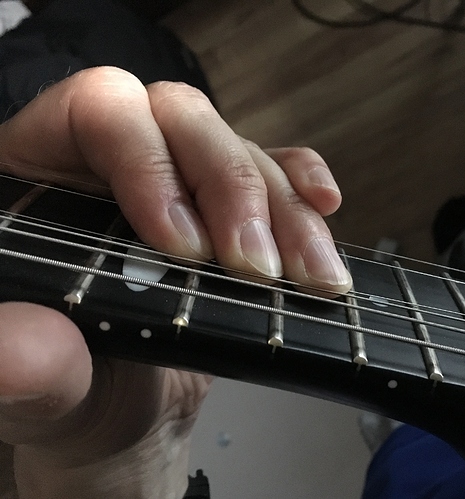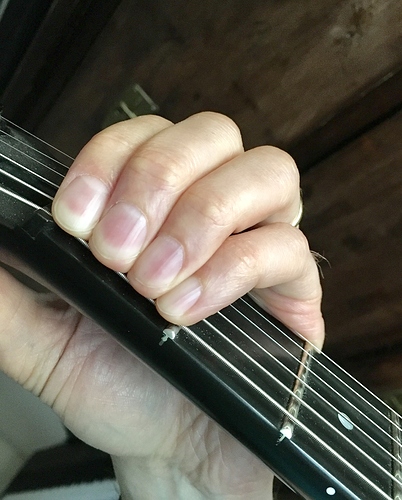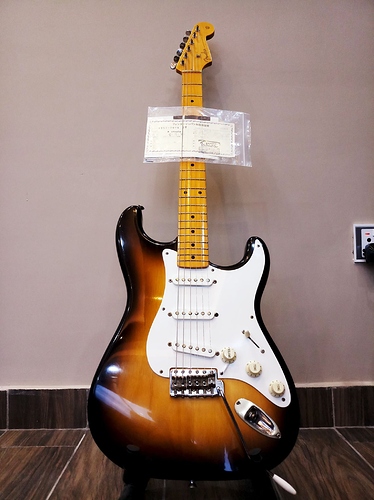Hi Nitro,
Let us start by saying it’s a good thing you’re not a mandolin player!
Interestingly, you point out fret width taking up precious real estate! My first reaction is … ‘get outta here, man, come back after six months of practice’ 
But kidding aside, my first foray with the big Dunlop 6000 wire was moving up and down the neck, I’d get a finger stuck on a fret in motion, and the whole action would come to a screeching halt!
Point is everybody has their oddities on hardware they’re not accustomed to. I’d say give it more time, big frets are good!
The Case for BIG frets, just two points really:
- Easier Bending. This one needs no explaining.
- Easier to play with higher action:
This one takes some doing to earn the benefit and is often not talked about in general, especially if you add scalloped into the mix.
Point is you’ve been doing it wrong ( for argument sake, for an alternative perspective ) all this while; relying on the fretboard to stop you means you’re potentially less in touch with the string dynamics and are relying on the fretboard for pressure feedback.
Once you get used riding just the frets your fretting hand will adjust to find that optimum pressure level with a few days practice.
You currently are using more pressure than required is my understanding based on reading your posts.
My fretting hand goes through three stages when training on new motions, at first, it’s weak and dodgy, then as the thing starts to kick in with reps and time ( sleep, it’s vital), the hand movements are exaggerated and using a lot more pressure, the third stage is when the same material starts to feel like you gliding, just skipping along while playing with clarity and full control.
As you cited SRV to YJM and everything in-between, two extremes. Though whats common is SRV’s #1 as almost scalloped by the end of it and had colossal Jumbo frets as he prefered. There’s seems to be a theme here.
I think at any given point of time you need to pick your battles and figure out what sort of player you’re going to aspire to be.
I guess I’m saying is give it time and you’ll be better off for it.
Having said this I’m in the middle of scoring an old Japanese Fujigen Gakki 1994 ST57 Stratocaster with 7.x radius! I’m fully expecting to refret that guitar in a year, it’s going to be a trip to play them old skinny vintage frets after two years of exclusively playing YJM sig strat.
But man big frets doing really help you play faster, I remember the last time I played my 94’ MIM, they came with vintage frets that by now are soooo worn down I was flying on it since as I said at some point your left-hand starts to glide over the board without much effort.
I suppose the catch is you can have higher action with big frets and therefore a better tone. Oddly enough I’m at 2.5mm fret top to string bottoms E to E, at Eflat on YJM (8-46), the tension is perfect for shred, feel like 9s at std. tuning, those string are something else, surprisingly long-lasting and freaking loud. Rings loud and sounds terrific into the amp. Doesn’t hurt to use Raw Vintage saddles, easily add a very noticeable amount of volume and punch, my guitar started to feedback on its stand which never happed with the regular Fender stamped saddles. I wouldn’t say the same about lowered action and small frets.
So main advantages, better tone with higher action, forces you to use string dynamics, eventually leading to better technique.





 But it’s an excellent company so I will certainly consider ordering one to my exact specs if I still can’t get used to the Pro neck a few months down the line.
But it’s an excellent company so I will certainly consider ordering one to my exact specs if I still can’t get used to the Pro neck a few months down the line.
